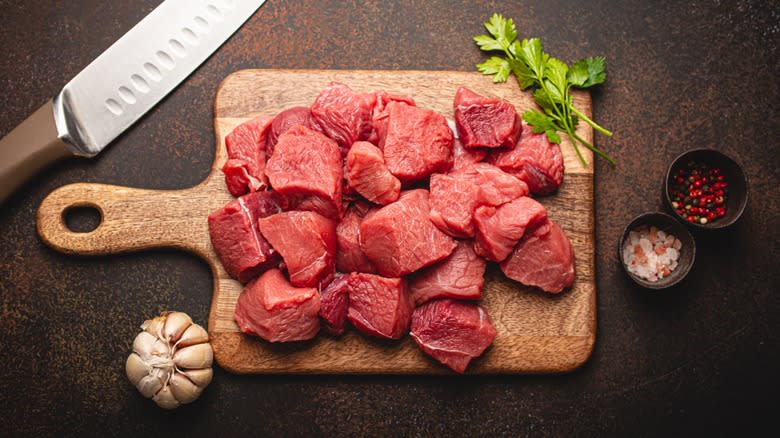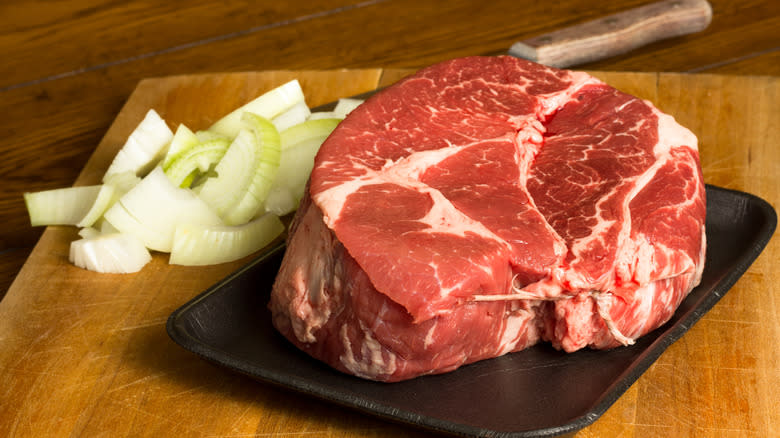The Most Common Cut Used To Make Grocery Store Beef Stew Meat

It can be hard to know what you are getting with any cut of beef from the grocery store, even those that are more clear than stew meat. There are familiar names like ribeye or flank steak that most people understand, but can you explain what makes a Denver steak or a flat-iron steak unique? At least those cuts have the benefit of a consistent definition to butchers, but stew meat is almost a non-label. If you put your beef in a stew, can't any cut be called stew meat? Unfortunately, you might never know for sure what you are getting with stew meat. But thankfully, most butchers behind the counter don't want you to make bad stew, and most of them are sticking to a few similar cuts of beef that really work: chuck and round (which shouldn't be used interchangeably for roast beef).
Beef chuck and round come from two very different parts of the cow — chuck from the shoulder and round from the rear of the leg — but they share characteristics that make them ideal for stew meat. Both are tough, have a lot of connective tissue, and have lean to medium fat. This makes them both more affordable and makes it necessary to slow-cook them to get tender results, two things that are great for beef stew. Most grocery store stew meat will be one of these two, and you can always ask your butcher to make sure.
Read more: Your Guide To The Different Cuts Of Steak
Beef Chuck And Round Are The Most Popular Choices For Supermarket Stew Meat

Supermarkets and groceries will lean toward chuck and round for stew meat, but you should still be careful with what you are buying. Stew meat can also be a dumping ground for the discarded trimmings of other beef cuts that would otherwise be wasted. This isn't always a bad thing, as the leftovers often come from expensive cuts that require more trimming to prepare. Cutting down on food waste is also a nice thing, and stew meat usually comes at budget prices. However, it does mean that you can end up with beef styles with different characteristics that do best with different types of cooking all mixed together. It can still make a good beef stew, but you might not get the perfectly tender result that you'd get with proper stew meat made from chuck or round.
So, how do you know for sure that you are getting good stew meat? Use your eyes. The best stew meat will be full of similarly sized chunks that all have consistent marbling and texture. Overly fatty pieces or gristle should stand out quite clearly. You can even compare it directly to the chuck and round on the shelf next to it if you aren't confident you can identify it. Most groceries aren't trying to pull anything too sinister with the labeling, and you should be able to figure it out yourself pretty easily.
Read the original article on Tasting Table


